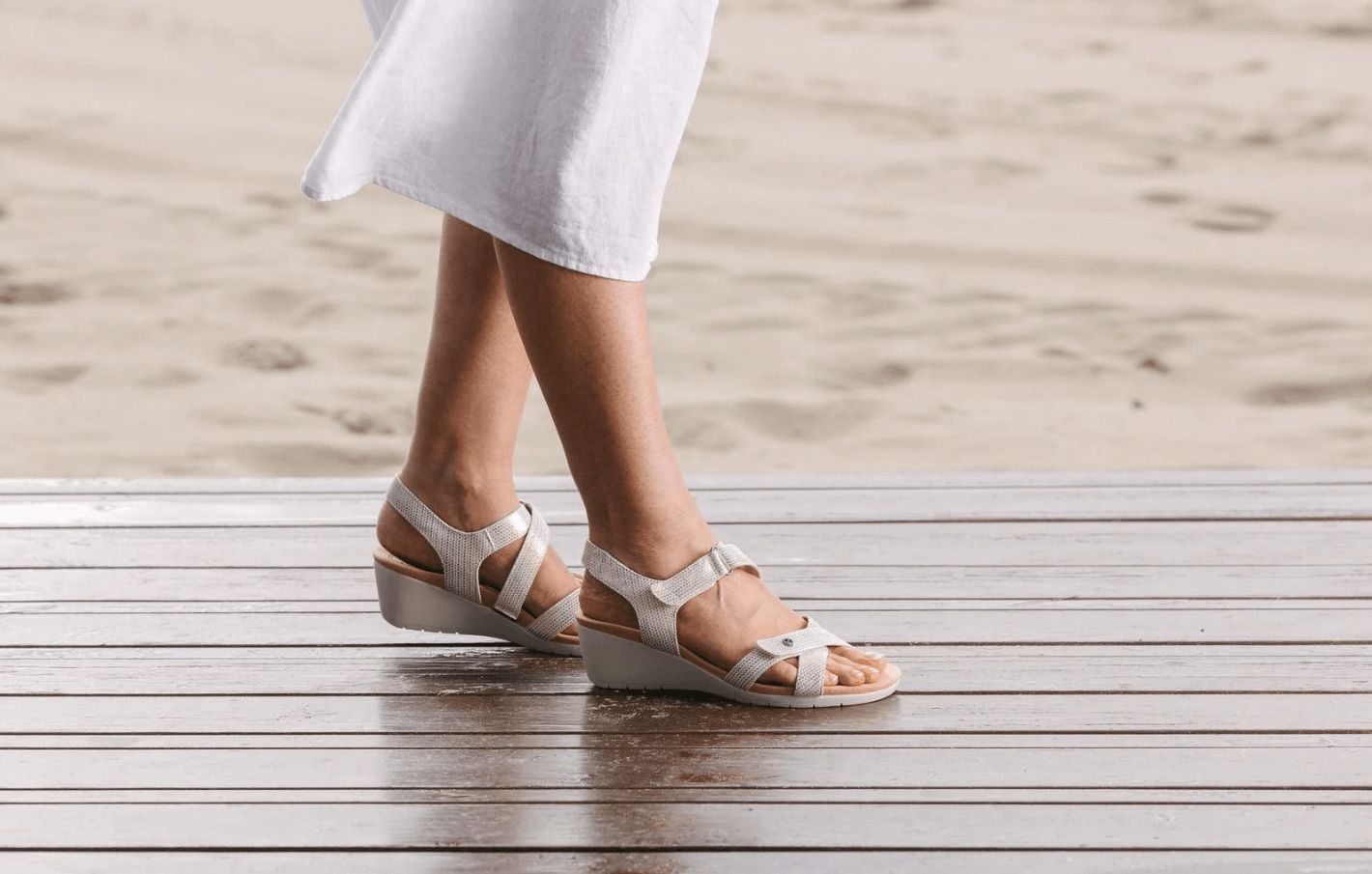- Thriving Guide
- Posts
- What Wearing Sandals Every Day Does to Your Feet
What Wearing Sandals Every Day Does to Your Feet
From joint pain to blisters, daily sandal use can lead to more problems than you might expect here’s how to protect your feet this summer.

There’s nothing quite like slipping into a pair of sandals on a warm, sunny day. They’re easy, breathable, and often stylish but if you’re wearing them daily, your feet might be paying the price.
While sandals and flip-flops are great for the beach or quick errands, they often lack the support and protection your feet need for regular wear. Over time, wearing sandals too frequently can lead to issues ranging from calluses to serious joint pain.
1. Joint Pain From Lack of Support
Most sandals don’t provide sufficient arch support or cushioning. Without it, your feet may roll inward or flatten out, stressing the knees, hips, and lower back. Over time, this can contribute to:
Flat feet
Shin splints
Lower back pain
According to the American Podiatric Medical Association, flip-flops and flat sandals should never be worn for long-distance walking due to their lack of structural support.
2. Increased Risk of Plantar Fasciitis
Plantar fasciitis is a painful inflammation of the tissue along the bottom of your foot, particularly around the heel and arch. It’s one of the most common causes of foot pain, and often worsens with shoes that offer no arch support like flip-flops or thin-soled sandals.
3. Bunions from Tight-Fitting Styles
Those fashionable peep-toe or narrow-toe sandals may look cute, but they can increase pressure at the base of the toes, potentially worsening or causing bunions—painful bony bumps at the side of the big toe.
4. Heel Pain After Long Walks
Flat sandals with little to no padding force your heel to absorb more shock, especially when walking on hard surfaces. This impact can cause heel pain and soreness, particularly during longer strolls or on uneven terrain.
5. Calluses and Rough Skin
If your sandal’s straps rub or your foot hangs slightly off the edge, you may develop calluses thickened skin caused by repeated friction or pressure. This is especially common near the heel, toes, or ball of the foot.
6. Twisted Ankles and Poor Stability
Sandals offer minimal support and stability. Styles with loose straps or wedge heels make it easier to lose your balance or roll an ankle especially if you're walking quickly, playing with kids, or navigating uneven ground.
7. Cuts, Scrapes, and Open-Toe Injuries
Sandals leave most of your foot exposed, making them a poor choice for yard work, crowded events, or active play. A stubbed toe, a sharp object on the ground, or even sunburn can become painful and potentially serious without proper protection.
8. Blisters and Infections
Friction from straps particularly between the toes can lead to blisters. When popped or left untreated, blisters may become infected, especially in warm, sweaty environments.
When to Avoid Wearing Sandals
Sandals aren’t inherently bad but they’re not right for every situation. Avoid them during:
Sports or high-impact activity
Yard work or physical labor
Long-distance walking or hiking
Slippery or unstable surfaces
What to Look for in a Healthy Sandal
If you love wearing sandals, consider upgrading to a podiatrist-approved pair with:
Arch support
Shock-absorbing soles
Secure straps that hold the foot in place
A low or flat heel
Make sure your foot fits the sandal completely no toes, sides, or heels hanging off. Look for products with the APMA Seal of Acceptance, which indicates that the shoe supports foot health.
When to See a Specialist
Persistent foot pain isn’t something to ignore. If switching shoes or resting doesn’t resolve your symptoms, it may be time to see a podiatrist or orthopedist. They can help you identify underlying issues and develop a personalized treatment plan.
The Bottom Line
Sandals can be a stylish and comfortable summer staple, but they’re not made for all-day, everyday wear. Overuse can lead to joint strain, painful foot conditions, and long-term damage. Choose supportive styles when you can, and save the flimsy flip-flops for poolside lounging.
Enjoying this kind of practical wellness insight? Subscribe to our newsletter or share this article with your favorite sandal-loving friend.